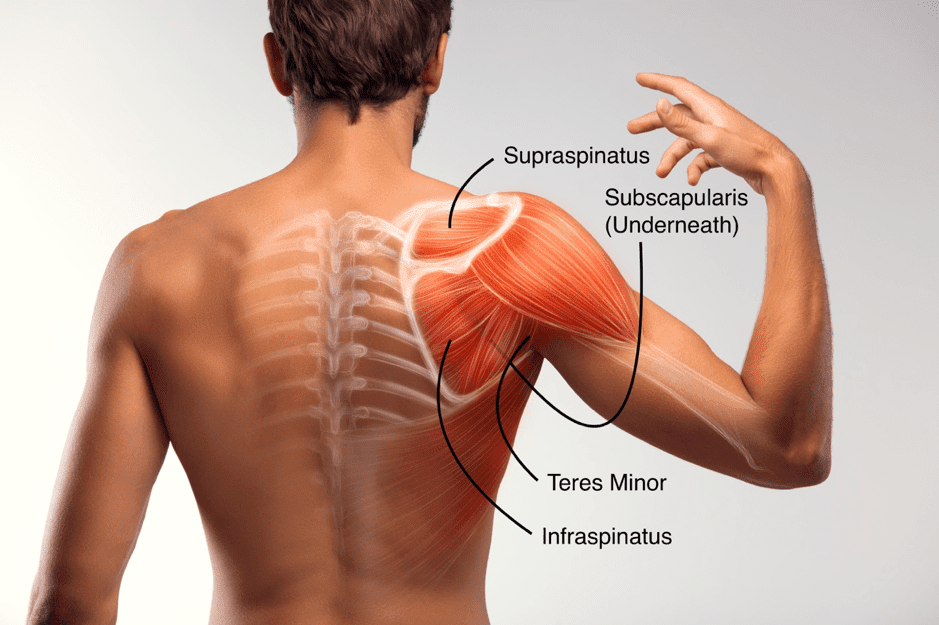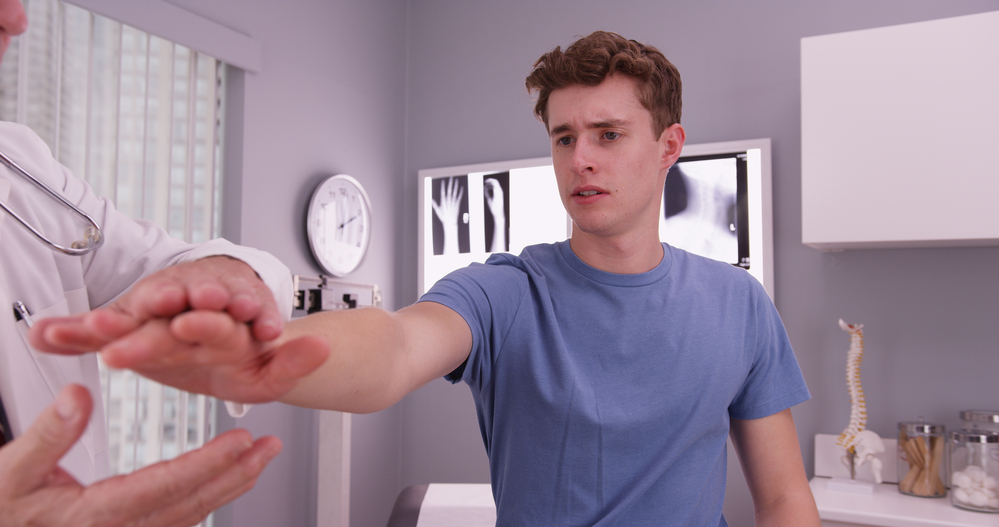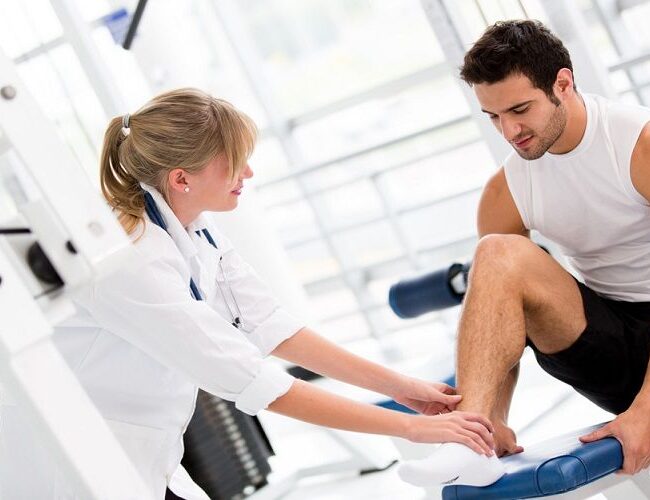- Sports Med U Newsletter
- Posts
- Rowing's Toughest Challenge: Understanding Rib Stress Fractures 🚣♂️🧩
Rowing's Toughest Challenge: Understanding Rib Stress Fractures 🚣♂️🧩
Sports Med U | Educating Minds, Elevating Potential
Rib Stress Fractures Among Rowers Definition, Epidemiology, Mechanisms, Risk Factors and Effectiveness of Injury Prevention Strategies
McDonnell, L.K., Hume, P.A. and Nolte, V., 2011. Rib stress fractures among rowers: definition, epidemiology, mechanisms, risk factors and effectiveness of injury prevention strategies. Sports medicine, 41, pp.883-901
In today’s letter
Analogy for Stress fractures
Rapid Results = Rib stress fractures happen due to numerous factors, but mots frequently due to over training, weak supporting musculature (serratus anterior, quads) and poor nutrition (not enough fuel, Vit-D, Calcium)
Professional take away = Dependent on severity 2-6 weeks of cessation of rowing type activities & focus on control & stability in non-pain provoking manner
Bite-size study – Infographic style!

Deeper look
Aim of study
The aim of this review is to outline the definition, epidemiology, mechanisms, intrinsic and extrinsic risk factors, injury management and injury prevention strategies for RSF in rowers
Background info
Among rowers, rib stress fractures are prevalent, with an average incidence of 9.2%.
Rowing involves an asymmetrical movement in narrow boats, accommodating two, four, or eight rowers, each equipped with a single oar.
Sculling, a rowing variant, is executed by scullers in single, double, or quadruple seating arrangements, with two oars per boat. Both activities are commonly referred to as rowing, emphasizing their interconnectedness.
Rowers exert force in the drive phase of the rowing stroke cycle through their hands on the oars and their feet on the foot stretcher.
The drive phase commences when the blade(s) enter the water, with the rower's ankles, knees, and hips flexed, preparing for leg extension to move the pelvis towards the bow of the boat. Simultaneously, the trunk extends, and the arms are pulled in towards the body.
Peak oar force typically occurs early in the drive phase but can shift depending on various factors. The 'finish' position is reached when the ankles plantar-flex, the knees and trunk extend, and the blade(s) are removed from the water.

Methods
9 relevant books, 140 journal articles, proceedings from 5 conferences, and 2 un- published presentations
Findings
Definition, nature and diagnosis of rib stress fracture
Rib stress fracture is characterized by an incomplete bone fracture resulting from an imbalance between bone resorption (the breakdown of old bone by osteoclasts) and bone formation (ossification) during the bone remodeling process.
Mechanical loading generates bone strain, and repetitive episodes of mechanical loading, commonly observed in rowing, can cause microdamage to the bone. Typically, the bone responds by adapting its structure, following Wolff's law.
Rib stress fracture symptoms include general rib pain, most frequently located in the lateral chest region, which intensifies during physical activity and becomes more specific over time.
The pain may radiate along the path of the intercostal nerve.
Diagnosis of most fractures occurs within 2 to 6 weeks from the onset of pain.
Early recognition is critical for receiving appropriate treatment and achieving an earlier return to rowing.
In bone scans, an RSF is identifiable as a "hot spot," indicating the uptake of a radioactive isotope in the fracture location
Period of 2–12 weeks, depending on the bone, is usually required to view stress fractures by radiography, therefore should not be used to rule out stress fracture.

The Quality of image is 😬
In the context of sweep rowing, a significant proportion (81%) of rib stress fractures are situated in the anterolateral/lateral aspects of the rib cage.
In contrast, sculling displays a more evenly distributed pattern, with 54% occurring in the anterolateral/lateral and 46% in the posterolateral/posterior regions of the rib cage.
The reasons for the variation in rib fracture location between sweep and sculling remain undetermined. However, it is likely attributed to the distinct shoulder, scapular, and thoracic movement patterns associated with each rowing style, leading to diverse loading patterns on the rib cage
Incidence of rib stress fracture in rowing
(Following a team of 165 high level rowers over 3 years | Goldberg and Pecora et al) When adjusting for the average injury rate per year and dividing it by the estimated annual roster size, the calculated incidence appears to be as low as 2%.
However, it's essential to acknowledge that this 2% incidence figure might underestimate the actual prevalence of rib stress fractures, primarily due to variations in training exposure among rowers, particularly within university teams where recruitment and dropout rates can be significant.
The most frequently fractured ribs were found to be in the range of ribs five to seven, followed by ribs four and eight, with fewer instances observed in the upper and lower rib regions.
86% of reported cases were concentrated within the range of ribs four to eight

Possible mechanism of rib stress fractures in rowing
Ribs, being non-weight-bearing bones, are generally not prone to experiencing impact forces as a consequence of rowing activity.
The underlying mechanical cause of injury in this context is believed to have a predominantly muscular origin.
There are two overarching theories that have been proposed for the mechanism behind rib stress fractures in rowers.
(i) The first theory suggests that rib stress fractures occur due to exercise-induced muscle fatigue, which brings about alterations in movement patterns and the distribution of stress, resulting in the concentration of excess force at specific locations along the bone.
(ii) The second theory posits that the strong muscle forces themselves act on the bone, inducing compression in the rib cage and the accumulation of damage as a consequence.
Possible Risk Factors for rib stress fractures in rowing
Risk factors differ from the mechanism of in- jury and are predisposing factors that combined with the mechanism of injury may make a rower more prone to injury.
Intrinsic risk factors
Gender
Despite previous research suggesting that female rowers face a higher injury risk compared to their male counterparts, this analysis of literature data did not reveal any notable gender-based discrepancies in the reported frequency of rib stress fractures.
The increased vulnerability of females was previously attributed to variations in bone structure and hormonal factors that impact bone density.
Age
Rib stress fractures have a higher reported incidence in rowers typically falling within the 22-27 age range, which often corresponds to the age of elite rowers.
While age is a factor, the occurrence of rib stress fracture injuries may be more significantly influenced by the rower's performance level and the intensity of their training regimen.
These training factors can impact bone, tendons, and ligaments
Level of performance
The likelihood of rib stress fractures elevates in tandem with the rower's performance level.
Although the available data is restricted, it did not establish a clear link between the years of training and the incidence of rib stress fractures in elite rowers who had experienced the injury previously.
The higher occurrence rates among elite rowers may be linked to factors such as intensified training volumes or other risk elements, rather than suggesting that better rowers are inherently more prone to rib stress fractures
Rib Cage Compartment Models
The rib cage is divided into multiple compartments, not a single unit.
Rib cage distortions increase from single to prolonged coughing in both genders.
High coordination of inspiratory and expiratory muscles during exercise reduces net pressure.
Studies haven't explored rib cage mechanics near full workload or under fatigue during exercise.
Abdominal muscle stimulation aids forceful cough in patients with muscle degeneration.
Repetitive cough is linked to rib stress fractures similar to those from rowing.
Forced expiration, led by the abdominals, strains the rib cage.
Bone Density:
Rowers with previous RSFs show lower whole-body and lumbar spine bone mineral density.
Rowers' bone density increases with force exerted and years of training.
Experienced female university rowers saw a 2.4% bone density increase after 6 months of training.
Reduced bone density in rib stress fractures cases is attributed to factors beyond training, like nutrition and hormones.
Gender-Hormone Factors
Depot medroxyprogesterone (the pill) for women are associated with higher stress fracture incidence.
The drug reduces estradiol production, leading to bone density loss.
Long-term drug users have a higher risk of fracture. Exercise-induced altered ovarian function in rowers is linked to lower estrogen and progesterone, reducing lumbar spine bone accrual.
In male lightweight elite rowers, testosterone, vitamin D, and training years affect total bone density.
Altered ovarian function, depot medroxyprogesterone injections, and low testosterone may negatively impact bone mineral density by altering bone remodeling mechanics or prolonging resorption processes.
Anatomical factors
Chest wall muscles:
Research on rib stress fracture injuries in rowers has primarily examined the roles of specific chest wall muscles, including the serratus anterior, external obliques, and middle and lower fibers of the trapezius.
A proposed theory suggests that bending stress, resulting from the combined contractions of the serratus anterior and external obliques, may be a contributing factor to RSFs; however, this theory lacks strong support from research.
Abdominal muscles:
The fibers of the rectus abdominis run vertically from the pubic crest to the costal cartilage of ribs five to seven, and to the xiphoid process of the sternum. These muscles are involved in flexing the vertebral column.
The rectus abdominis also contributes to rib cage compression by pulling downward on attachment sites (lower ribs five to seven and sternum) and aids in forced expiration, a common occurrence near the finish position in rowing.
The oblique muscles originate from the external surfaces of ribs five to eight, interdigitating with the serratus anterior, and insert on a tendonous sheath running vertically (below the rectus abdominis), attaching to the lower sternum and pelvic bone. They play a role in trunk flexion, rotation, and forced expiration.
Notably, a significant percentage of rib stress fracture (73%) reported by Warden et al. occurred in ribs five to seven, which are attachment sites for the rectus abdominis, while 84% occurred in ribs five to eight, which also involve attachment sites for the rectus abdominis and external obliques, providing additional support for the theory of abdominal-led rib cage compression.
Joint mobility:
To potentially reduce the overall risk of rib stress fracture, it is important to enhance joint mobility, which can help divert forces away from the bones.
The rib cage is associated with several joints, including the costochondral joints (linked to the sternum), costo-vertebral joints, and costotransverse joints (associated with the thoracic spine). Prolonged rowing may lead to increased thoracic spine flexion, which, in turn, may intensify tension in these joints, diminishing their ability to attenuate forces and potentially increasing the risk of injury.
Consideration should also be given to the kinetic chain distal to the site of injury, as a lack of flexibility in the lumbar spine and hips can alter the rowing stroke, potentially leading to compensatory movements such as increased scapular protraction, which can affect the balance of forces between retractors (rhomboid muscle group) and the water.
Extrinsic risk factors
Training
Micro-damage formation and rib stress fractures can be influenced by strain rate, force magnitude, and the number of loading cycles.
Elite rowers often perform a greater number of strokes during each rowing session, making them more susceptible to stress fractures.
Bench pull and bench press exercises replicate scapular retraction and protraction movements in rowing's drive and recovery phases.
These exercises place significant stress on the posterolateral rib cage, especially in scullers.
Many rowing injuries occur during resistance training and land-based rowing ergometer sessions, typically as acute injuries, while rib stress fractures are considered overuse injuries.
Technique
There are two primary rowing styles: sequential and simultaneous. Sequential focuses on leg drive first, then trunk and arm motions, while simultaneous involves legs and trunk moving almost simultaneously.
International elite rowers have excelled with both rowing styles.
The sequential style leads to higher peak handle force, greater relative handle force concerning body weight, increased absolute and relative handle power, and slightly longer stroke lengths relative to rowers' height.
Elite rowers with a history of rib stress fractures exhibited significant disparities in seat and handle velocity during the initial drive (0.25 m/s and 0.07 m/s, respectively).
It's uncertain whether these differences were due to varying motor strategies or poor execution of the sequential approach among those who sustained injuries.
Repetitive high-loading of upper body musculature may contribute to rib stress fractures injury, potentially making the sequential motor strategy a risk factor for rib stress fracture injury.
Equipment
Various factors that amplify rib loading can contribute to microdamage and the development of rib stress fractures.
Rib loading directly corresponds to the force exerted on the rib cage, linked to the rower's applied force on the oar.
The utilization of heavier oars results in increased rib loading, and since the early 1990s, the transition from 'Macon' to 'Big Blade' oars has been associated with a rise in rib stress fractures.
Macon oars were longer, thinner, and symmetrical, whereas Big Blade oars are shorter, broader, and asymmetrical, aimed at enhancing rowing efficiency.
Prolonged rowing leads to increased lumbar spine flexion due to fatigue, which raises stress on the spine's posterior structures.
The costo-vertebral joints and rib cage significantly contribute to spinal stability.
Consequently, it is crucial to consider spinal fatigue as a factor in determining RSF risk, as these stresses can indirectly affect the ribs.

Nutrition
Stress fracture risk is associated with factors like inadequate calcium and vitamin D intake, along with eating disorders.
Vitamin D facilitates calcium absorption in the gut and inhibits parathyroid hormone, responsible for bone resorption.
Calcium is essential for preserving bone mineral density, enabling bones to withstand applied stresses.
A substantial study of female US naval recruits demonstrated that calcium and vitamin D supplementation reduced stress fracture incidence by 20% compared to a placebo-supplemented control group.
Supplementation could serve as an effective preventive measure for elite rowers, especially during intense training phases.
Preventing rib stress fractures
Ensuring rowers possess sufficient leg extension strength and lumbo-pelvic coordination reduces upper body stress and fatigue by enabling effective power transmission to the oar handle.
Neglecting the serratus anterior muscle can lead to muscular weakness, reduced protraction, impaired muscle memory, and decreased force production in the kinetic chain, harming performance.
Implementing warm-up and cool-down routines, along with stretching exercises, maintains mobility in costovertebral and costotransverse joints, aiding rib stress absorption.
Regular screening for thoracic vertebrae, rib, and surrounding area malalignment or hypomobility during intense training is recommended, with suitable interventions if changes noted.
Sports massage is lacking evidence, but it may offer pain relief, improve joint mobility, and mitigate injury risk, in addition extended post-training stretching is linked to lower injury rates in junior elite rowers.
Bone adapts to mechanical demands, enabling changes in size, shape, and structure. Rib-cage-stressing exercises should be conducted with care in strength and conditioning programs. Bench press and bench pull exercises exert substantial compressive forces on the ribs, yet their role in rib bone strengthening remains unclear.
Serratus anterior strengthening is linked to positive recovery in case studies, suggesting its potential in preventing RSF injuries.
Clinical use
To mitigate injury risk, avoid sudden increases in training volume, especially in land-based weight training and ergometer sessions, due to the considerable stress they place on the body
When suspecting a rib stress fracture , it's advisable to avoid excessive abdominal exercises, making them one of the last exercises reintegrated after recovery.
Rowers tend to positively respond to 2 to 8 weeks of rest and adjusted training.
Avoid using ibuprofen or other NSAID’s - NSAIDs commonly for pain management, might hinder bone healing by reducing prostaglandin synthesis, crucial for normal bone turnover and fracture healing.
Altered training programs can involve pain-free cardiovascular exercises (typically lower-body stationary cycling) and strengthening the serratus anterior. It's advisable to gradually return to rowing with low-impact intensity over 1 to 2 weeks.
What’s new in sports Med U
Meme of the week

Like what you see?
Check out our articles!



Reply